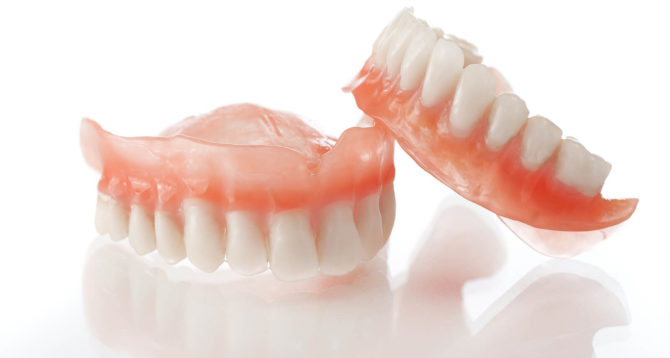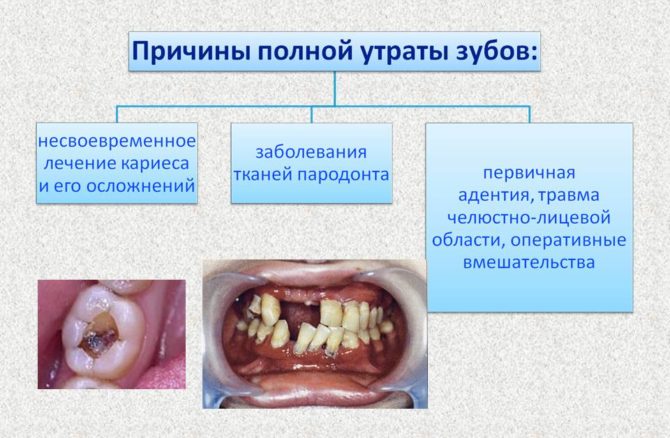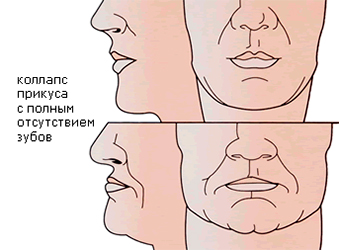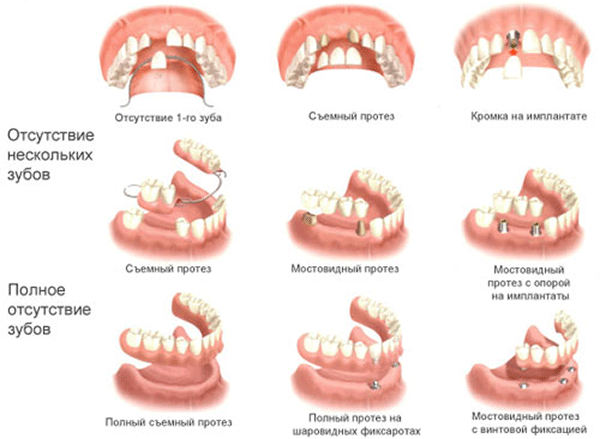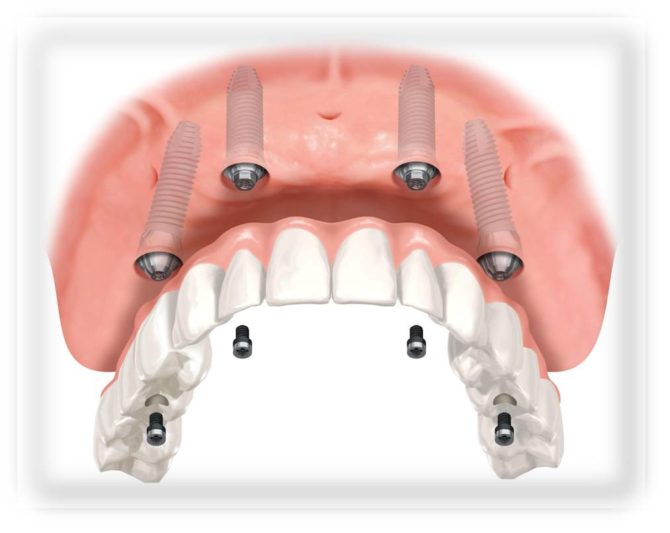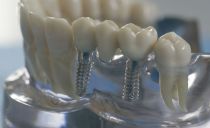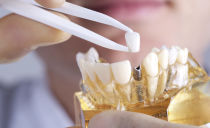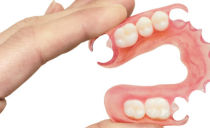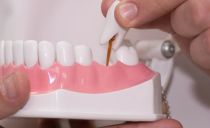Possible options for prosthetics in the absence of teeth
To select removable dentures and understand which ones are better in the complete absence of teeth, it is necessary to consider different manufacturing techniques. Indeed, age-related factors, physiological features of the jaw, and the financial capabilities of the patient affect the type of prosthetics.
Content
Causes and consequences of adentia
Lack of teeth is secondary and primary. Primary adentia is determined at birth, this form is quite rare. Secondary absence of teeth is observed more often and is characterized by their loss after the complete formation of the dentition. In another way, this form is called acquired.
Causes of loss
The causes of secondary adentia are numerous. The main ones include:
- age-related changes: in older people, soft tissues lose their tone, and bones weaken;
- lack of vitamins;
- dental diseases: caries, periodontitis and periodontosis, gingivitis, ontogenic osteomyelitis;
- mechanical damage to the jaw;
- effects on toxins on tooth enamel and tooth roots: smoking, drug use;
- pathologies of the immune system and other disorders of the body.
The type of oral prosthetics with complete loss of teeth depends on the cause of adentia.
Effects
If a person for some reason does not want to put a prosthesis, then such a failure is fraught with negative consequences:
- bleeding and sore gums as a result of having to play a chewing role;
- facial features are deformed (due to atrophy of the tooth skeleton): the lips sink, the size of the lower part of the face decreases, the corners of the lips and the tip of the nose drop, muscle tone is lost, which is typical for old age;
- senile progeny is formed;
- the jaw bones become thinner due to the load on them;
- the size of the masticatory muscles changes, because of which there are disturbances in the functioning of the digestive tract;
- speech quality is reduced.
Timely installation of dental prostheses makes these problems impossible, and modern technology allows you to complete the procedure quickly and painlessly.
Advantages of prosthetics with full adentia
Adentia also has its advantages. A person who is going to put a false jaw does not need to worry about choosing the color of tooth enamel, since all elements of the prosthesis will be identical. In addition, the patient receives a truly dazzling smile, which is not always possible with natural teeth.
Any type of complex prosthetics in the complete absence of teeth will help to permanently get rid of odontological pain.
Key Tasks
Prosthetics in the complete absence of teeth (adentia) on the lower and upper jaw involves the following tasks:
- Interview the patient for the time of occurrence and causes of adentia.
- Find out complaints and information about previous implants if the jaw was previously not properly prosthetized.
- Inspect the face. Both intentionally and invisibly during a conversation. Carry out palpation of the oral cavity and additional studies: radiography, graphic recording of the jaw movement.
- Set a diagnosis.
- Determine the individual size of the prosthesis.
- Correctly construct the dentition for its simultaneous participation in the chewing process, the formation of speech and breathing.
- High-quality fix the prosthesis.
Himself the process and its duration depends on the type of prostheticswhich the attending physician will choose.
Types of modern removable dentures in the complete absence of teeth
Odontological structures used in implantation can be divided into fixed dentures in the complete absence of teeth, removable at home, conditionally removable and combined.
Dental removable dentures can be removed by the person himself for standard personal care procedures. Conditionally removable is removed by the attending dentist in a clinic setting. With combined prosthetics, only some part of the teeth is static.
Fixed structures do not uninstall at all for one cleaning, they are installed for a long period with a guarantee.
Removable constructions economy
Complete removable dental prosthetics is the most affordable option. Most often, these designs are made of acrylic or modern nylon of the new generation. They are mounted on the jaw using special locks or suction cups.
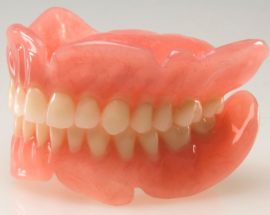 If the prosthesis is made correctly, then after placement, excess air will come out from under it. Then the design will be better and last longer.
If the prosthesis is made correctly, then after placement, excess air will come out from under it. Then the design will be better and last longer.
Such designs are ideal for prosthetics of the upper jaw in the absence of teeth, although they cause problems with speech articulation and worsen the sensitivity of taste buds due to overlapping palate. And here when installing on the lower jaw, periodic prosthesis loss is possible while talking, kissing or eating.
Acrylic designs
Even modern prostheses made of acrylic ductile plastic are massive, dimensional and initially cause a lot of inconvenience. Acrylic structures have a porous structure, which is fraught with the development of bacteria and inflammatory processes in the oropharynx. But this type of prosthetics has several advantages:
- lack of contraindications;
- simplicity in leaving and daily use;
- fast production;
- the prosthesis is easy to repair.
An acrylic removable denture on the lower and upper jaw can be placed even on a child if he is diagnosed with a congenital complete absence of teeth. After all, implants to implant to a minor are pointless, as it grows.
Nylon dentures
The main feature of a nylon soft prosthesis in the complete absence of teeth is the lack of a rigid base. The new soft design provides quick adaptation of the patient, and the material itself is hypoallergenic. Nylon does not absorb foreign substances.
New generation prostheses look aesthetically pleasing and as natural as possible. But nylon structures often have to be corrected and even replaced due to quick subsidence, which is uncharacteristic for acrylic.
The cleaning of nylon prostheses should only be done in a special way, since cleaning with a plastic brush and toothpaste will lead to microcracks and a loss of the snow-white color of the structure.
The types of removable dentures in the complete absence of teeth on the upper jaw are striking in their diversity. If there are no serious medical contraindications, you can choose any design in accordance with your financial situation.
But a removable removable denture on the lower jaw with a complete absence of teeth is worth choosing acrylic, so that there are no problems with its loss. However, prosthetics with nylon of the lower jaw in the complete absence of teeth is effective, but short-lived. Even with proper care prosthesis service life will not exceed 5 years.
Conditionally removable structures
In appearance, they look like a removable denture and are also installed on the upper and lower jaw, they are used in the complete absence of teeth.But conditionally removable structures are more convenient, since they are more securely fixed in the mouth due to implantation of the implants and do not fall out when talking or chewing. If necessary, this the prosthesis can be removed in the dental office.
Conditionally removable structures are classified by the method of connection with implants:
- girder (imply joint mounting of implants, and therefore the most durable);
- spherical (the prosthesis is attached to a spherical abutment);
- magnetic;
- microlock;
- silicone.
Such prosthetics do not cause discomfort and make it possible to use any products, even nuts. But the prostheses themselves are expensive, which makes them inaccessible to many patients.
Modern combined designs
This is not the best option for complex prosthetics in the complete absence of teeth, but sometimes its use is justified. The structure of the structure includes removable and non-removable elements.
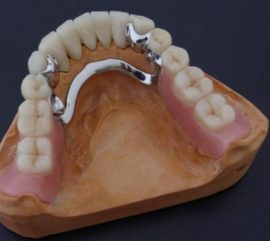 The first include partial dentures:
The first include partial dentures:
- nylon;
- small saddle-shaped;
- lamellar;
- clasp;
- arc.
And the static elements on which the partial structures are held are implants, but in a rather large number.
Fixed structures
The installation of fixed prostheses is the most expensive option for dental implantation, which happens in the absence of teeth. Using this method, more than 11 implants are implanted in each jaw. But the technology is rarely used, because in addition to high cost it has a number of minuses:
- requires a large amount of bone tissue;
- There are many contraindications to the procedure, for example, vascular diseases, frequent headaches, heart defects;
- the location of nerve fibers should not interfere with the implantation of the structure;
- For a long time, such prostheses were not placed on people over 34–39 years old due to the high risk of complications, due to new technologies age restrictions were eliminated, but care should be taken anyway.
Most often, in the absence of teeth, classic fixed dentures with a non-metallic or ceramic-metal bridge are placed on the upper and lower jaw. For this, implants are implanted to the patient (at least 12 pieces), which become a support for the bridge.
Static dentures are better and more functional than all types of removable structures with adentia, but their presence complicates the diagnosis using MRI, which can complicate the diagnosis of serious diseases in the future.
Output
The feasibility of a particular type of dental prosthetics depends on a combination of factors, therefore it is impossible to draw an unambiguous conclusion about the advantages of removable or fixed structures. An elderly person who, for health reasons, requires computed tomography and resonance imaging, is not worth implanting implants. But for a representative of the young generation, for some reason having lost all its teeth, it is still too early to acquire a false jaw.

